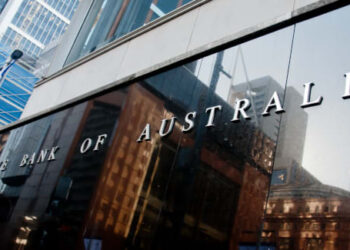The Australian Securities and Investments Commission (ASIC) has commenced civil penalty proceedings against the trustee of Australia’s largest superannuation fund, AustralianSuper, alleging failures to address multiple member accounts.
ASIC alleges that for almost 10 years, AustralianSuper failed to implement adequate policies and procedures to identify members who held multiple AustralianSuper accounts and to merge those accounts, where a merger was in the member’s best interests.
AustralianSuper then continued to charge multiple sets of fees and insurance premiums to these members.
“Failing to merge duplicate accounts within a fund can have significant financial consequences for members who end up paying multiple sets of fees, eroding their superannuation balance over time,” ASIC deputy chair Sarah Court said.
Between 1 July 2013 and 31 March 2023, approximately 90,000 AustralianSuper members were affected, with total cost to members reaching approximately $69 million.
ASIC is concerned that despite AustralianSuper allegedly being aware in 2018 of the number of multiple member accounts within the fund, and possible gaps in its policies and procedures, it did not take adequate steps to investigate and resolve the issue until late 2021 and early 2022.
“ASIC expects that superannuation funds will put their members first and promptly address issues that cause members to face multiple sets of fees and insurance premiums. We expect these issues to be identified and rectified quickly, including compensating members if a trustee has failed to comply with its obligations,” Ms Court added.
ASIC claims that, between 2019 and 2023, AustralianSuper failed to:
- set out a procedure to identify and merge multiple accounts of members in accordance with section 108A of the Superannuation Industry Act;
- efficiently identify, escalate, and rectify the ongoing failure to comply with that section and remediate affected members;
- promptly identify and merge multiple accounts in accordance with the required procedures;
- do all things necessary to ensure its financial services were provided efficiently, honestly, and fairly;
- exercise the same degree of care, skill, and diligence as a prudent superannuation trustee would have exercised; and
- perform its duties and exercise its powers as a superannuation trustee in the best interests of its members.
ASIC is seeking declarations, pecuniary penalties, and other orders against AustralianSuper. The date for the first case management hearing is yet to be scheduled.
In a statement on Friday, a spokesperson for AustralianSuper said the fund “regrets that its processes to identify and combine multiple accounts did not cover all instances of multiple member accounts”.
“This should not have happened, and we apologise unreservedly to members”.
“AustralianSuper self-reported this issue and has fully cooperated with ASIC and APRA on this matter and, separately, with ASIC for its 2022 industry review of the management of multiple member accounts.”
The spokesperson noted that the fund implemented a member remediation program over the matter earlier this year, which they said was now “substantially complete”.
“Having identified this issue, we have strengthened our processes to identify and combine multiple accounts and remain committed to minimising these for members,” the spokesperson continued.
“AustralianSuper will continue to work with ASIC to bring these proceedings to a resolution.”
This is the first case that ASIC has brought in its capacity as a co-regulator with APRA alleging contraventions of section 52 of the Superannuation Industry (Supervision) Act 1993 that relates to the conduct of a trustee’s duties.
Unintended multiple accounts remains a significant issue for Australian consumers. As at 30 June 2022, approximately 3 million people had multiple superannuation accounts. A significant proportion of these multiple accounts are held within the same fund (data provided by the ATO shows that, as of 31 May 2023, over half a million members had two or more accounts within the same fund).
AustralianSuper is Australia’s largest super fund, with over 3.2 million members and more than $300 billion in member assets. It is remediating members who held multiple accounts within the fund at and from 30 June 2014, for the period 1 July 2014 to 31 March 2023.
In December 2022, AustralianSuper reported a potential failure to comply with their obligations to consolidate duplicate accounts to ASIC. AustralianSuper was then subsequently included in ASIC’s broader review of trustee practices.
ASIC published the findings from this review in June 2023, when it called on superannuation trustees to review their policies and procedures regarding duplicate members accounts, after the review identified poor practices resulting in consumer harm.








Members are responsible for managing their own financial affairs, including their superannuation, and if they choose not to consolidate their own super, or are too disorganized or lazy to take an interest in their own retirement savings, then they should pay for the fees. It is not that hard to monitor your own superannuation account(s) and consolidate them!
So they self-reported and worked to fix the issue yet ASIC in their infinite desire for headlines sues them anyway? Tax dollars hard at work! After all, why go after actual criminals trying to hide their wrongdoings when you can have people report themselves and screw them over any way
Aware super self reported an issue they inherited from a company they bought out a few years ago and was fined $20m last year for fixing it with full cooperation of ASIC.
I was one of those who had two accounts under the same name, one icorrectly created by my employer at the time … with a birth date which made me one years of age! I contacted AusSuper on two separate occasion over the years to get the accounts merged and the process each time was unbelievably convoluted and ridiculous. Even with the required statement from the employer, and the fact that the birth date was ridiculous, they wouldn’t merge them. Both times. So, not every one is disorganized or lazy just because they had multiple AusSuper accounts. I’m happy ASIC is going after them (although they should have done it years ago) because AusSuper just made it nigh on impossible to merge accounts. They can experience some pain for the pain and stupidity they deployed.
i am quite amazed that ASIC in its wisdom deems chasing headlines is in the best interest of the members of Australian Super, when in fact the fund self-reported. Any fines will come out of members accounts so its a loss for all members of the fund.
Surely it’s not a sin to have more than one super account?
ASIC Getting penalties from self reporting of breaches is a cheap shot, no-cost way of getting and recording easy convictions they can put on their so-called more ‘aggressive’ compliance management reports to Government. ASIC does this also to Advisers and Licensees who self-report breaches, but still charges way too much for their Financial Services Adviser Compliance Annual levy, as if all those self reports are costing them money to investigate and penalise, whether there has been investor loss or not. Jurisprudence requires the law to be effective and respected, so that it has some deterrent effect in the community at large. The Financial Services Industry is the ONLY sector of the community that still gets punished even when it finds and takes steps to rectify its own mistakes so they won’t happen again. We might not all be perfect, but only bullies pick on and continue to beat up those who are trying to be and do better.
ASIC is sues AustralianSuper rather than giving them a warning and a period to get things rights BECAUSE they didn’t help members SAVE money.
Suing AustralianSuper is going to WASTE far more money than just getting the Super Fund to refund the extra paid with an ‘I’m sorry’ goodwill jesture.
ASIC you are useless and add ABSOLUTELY ZERO VALUE!!!
Somebody should sue ASIC for wasting super funds’ and advisers’ time and money!!!
Great – we lose BOTH ways.
when it is not either of their own money.
Tax payer dollars to pay ASIC costs AND members’ super to pay Australian Super costs.
Should not the members have recourse against the Directors, CEO and/or Board personally for their non-compliance / processes.